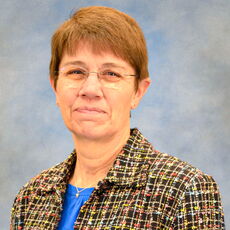
20 on '20: New training programs look to ease nursing shortage

Although Maine’s nursing shortage hasn’t been solved, it’s been slowed by a new push to expand enrollment in nurse training programs across colleges and universities, says Terry Colby, professor of nursing at the University of Maine at Augusta and co-chair of a nursing workforce group across the Kennebec region.
“From the educational standpoint, all of the nursing programs have been working hard to increase enrollments and thereby, hopefully, increase graduation rates and the number of nurses in practice,” she says.
This year the University of Maine at Augusta will continue its work with hospitals in central Maine to provide students experience in the clinical setting.
“Hopefully, we’ll make the clinical education part more accessible in a variety of hospitals — not only the bigger ones like MaineGeneral, Togus and Pen Bay, but also some of the smaller, rural hospitals,” Colby says. “We’re increasing our efforts to find a way to utitze the smaller facilities, increase student placement and increase interest in working in rural areas after graduation.”
Need for teachers as well
It’s not just nurses that are in demand. There’s also an effort to address the shortage of nurse educators.
The campaign involves creating partnerships between hospitals and schools in preparing nurses to work as clinical adjunct faculty.
“There have been more efforts and resources to make that an easier process and an effective one,” she says.
Colby sees these efforts play out at UMA’s centers in Rumford, Rockland, Ellsworth, Brunswick and Augusta, where students have started their first year of nursing program classes at each campus.
“They’ll start clinical classes in 2021 and hopefully graduate in 2024,” she says. Bringing the program to students in more areas around the state helps to increase enrollment, she notes.
Other initiatives around Maine focus on keeping nurses in Maine once they’ve graduated, and attracting nurses from neighboring states, she notes.
“There’s a real effort from all of the schools of nursing to make nursing education accessible to students,” she says. “All of the nurse education leaders are coming together on these efforts, so that we’re not competing with each other but working together.”














0 Comments